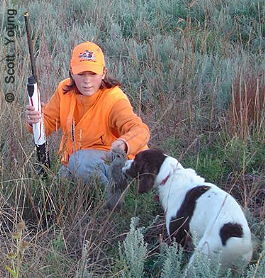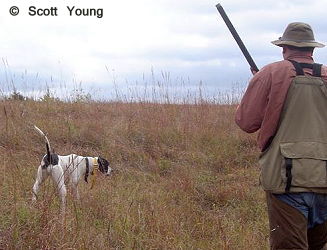
As you slip the last shell into your gun, your mind is racing and your heart is pounding. You look down and your dog is staring intently at the field ahead. You take a deep breath, unleash your dog and you are off. You have just entered the world of tournament hunting.
Competitive tournament hunting has experienced dramatic growth over its 20-plus year history. It is widely popular among hunters throughout the country, but the stronghold for tournament hunters is the Midwest. No one really knows when or where tournament hunting started, but every weekend from the start of September through the end of March there are events virtually everywhere throughout the U.S. Most events are sanctioned by one of the established organizations, but, there are smaller "money" hunts or "club" hunts (non-sanctioned) that are popular with hunters that are looking to extend their hunting opportunities either before or after their regular hunting season.
What sets tournament hunting apart from other competitive dog events is the fact that the event is scored, not judged. There is no judgment about what a dog should or should not look like while hunting in the field. Scorekeepers simply score what a dog does and what the hunter does during their respective run and at the end of the run they tally the score. The highest score wins. This type of format is very popular among hunters, weekend competitors and the serious tournament circuit hunter.
"What sets tournament hunting apart from other competitive dog events is the fact that the event is scored, not judged."
Each organization has some variation of the same type of tournament format. All organizations offer divisions for pointing dogs and flushing dogs. Within those divisions there are events for "singles" & "doubles". Letís take a closer look at each event.
In the "singles" competition, you have a single hunter and his or her dog. The field size ranges from four to eight acres and the cover can be a wide variety, from light grass, to briars and brambles, flat fields of cut cropland to rolling hills of CRP grass. Most tournament directors like to layout fields that most closely simulate natural hunting. There will be three or four birds planted in each field for each run and the hunter is allowed between six and eight shells. Each run has a time limit, usually between 20-30 minutes.
In the "doubles" competition, you have two hunters and two dogs. The field size ranges from 10-16 acres. Each run will have six birds planted in each field. Shells will be limited to five per hunter. Shells may not be shared between hunters. The time limit is 30 minutes and hunters must remain within 30-yards of one another at all times.
Scoring is a bit different for pointing and flushing breeds. In the pointing division, the dog must "point" the bird for a minimum of three seconds and the dog cannot be commanded to come to a point. The dog must establish a point naturally and on itís own. Also, in the pointing division, the shooter is awarded two extra points for each bird that the hunter actually shoots. In other words, the hunter is rewarded for his shooting abilities rather than allowing their dog to catch or trap the bird. Points are awarded for bagged birds, full retrieves or partial retrieves, qualified point, unused shells and minutes left on the clock.
Conversely, in the flushing division, a bird that is caught or trapped by the dog is treated as if the hunter shot the bird. Full points are scored for a trapped bird or a bird that is shot by the hunter in this division. Points are awarded for bagged birds, flushes, full retrieves or partial retrieves, unused shells and minutes left on the clock.
So you want to get involved in tournament hunting? The first thing you need to do is contact one of the established organizations. There are several organizations throughout the country. Some are nationwide organizations, with events held every weekend in all parts of the country. Some are more regional in nature, but still offer tough competition. Whichever group you choose to join, do your homework first. Look to see what events are held in your area and review the rules specific to that organization. Most rules & formats are similar, but there are slight variations that you need to be aware of. Here is a list of organizations that currently offer tournament hunting.
|
|
| Bookstore | Bill Fawcett Reviews | Bookshelf | Advertise | Classifieds | Resources | Events | Point Standings | Archives | |
|
|
Copyright © Spaniel Journal & L Baughan Webdesign, 2002-2006, all rights reserved worldwide |
|

